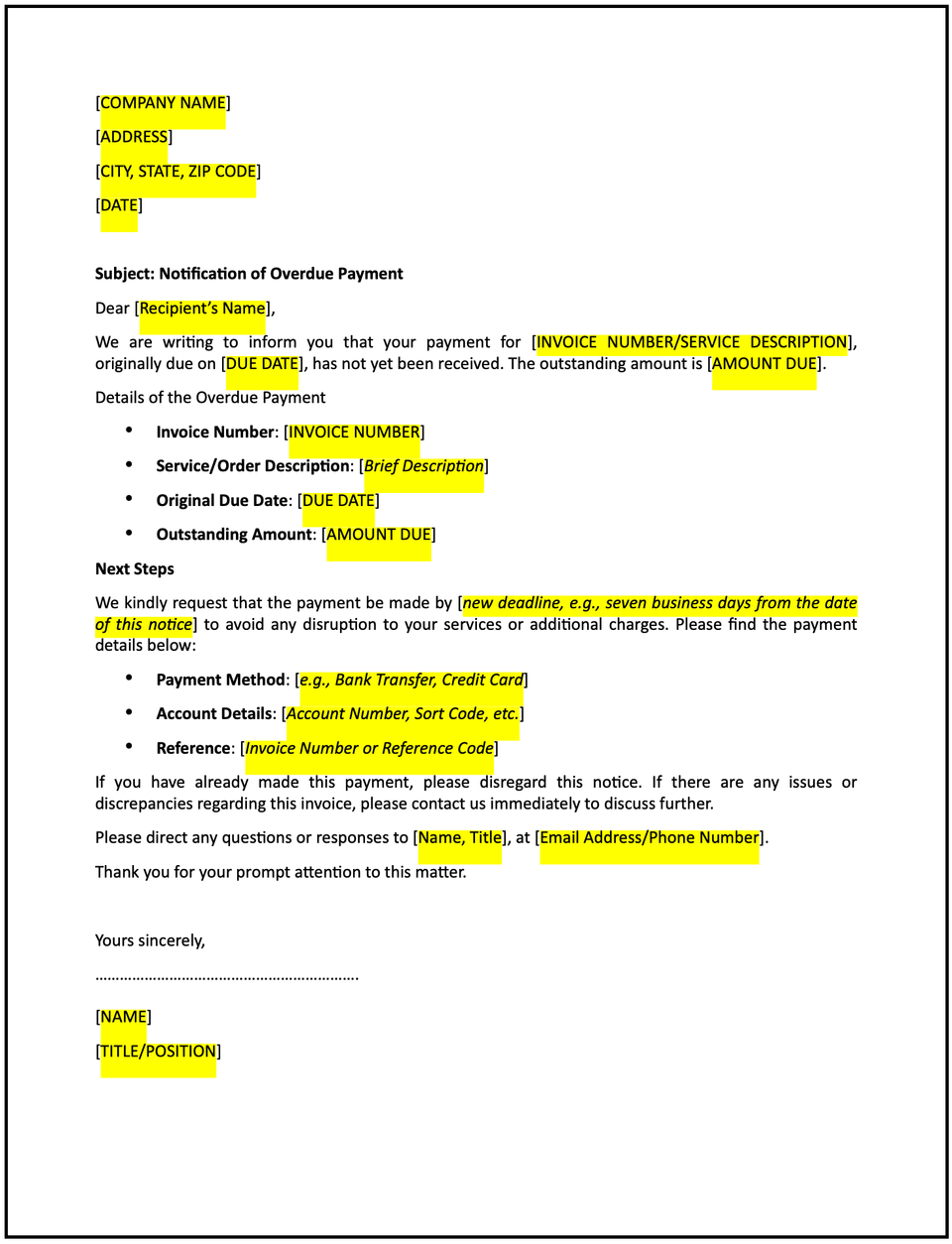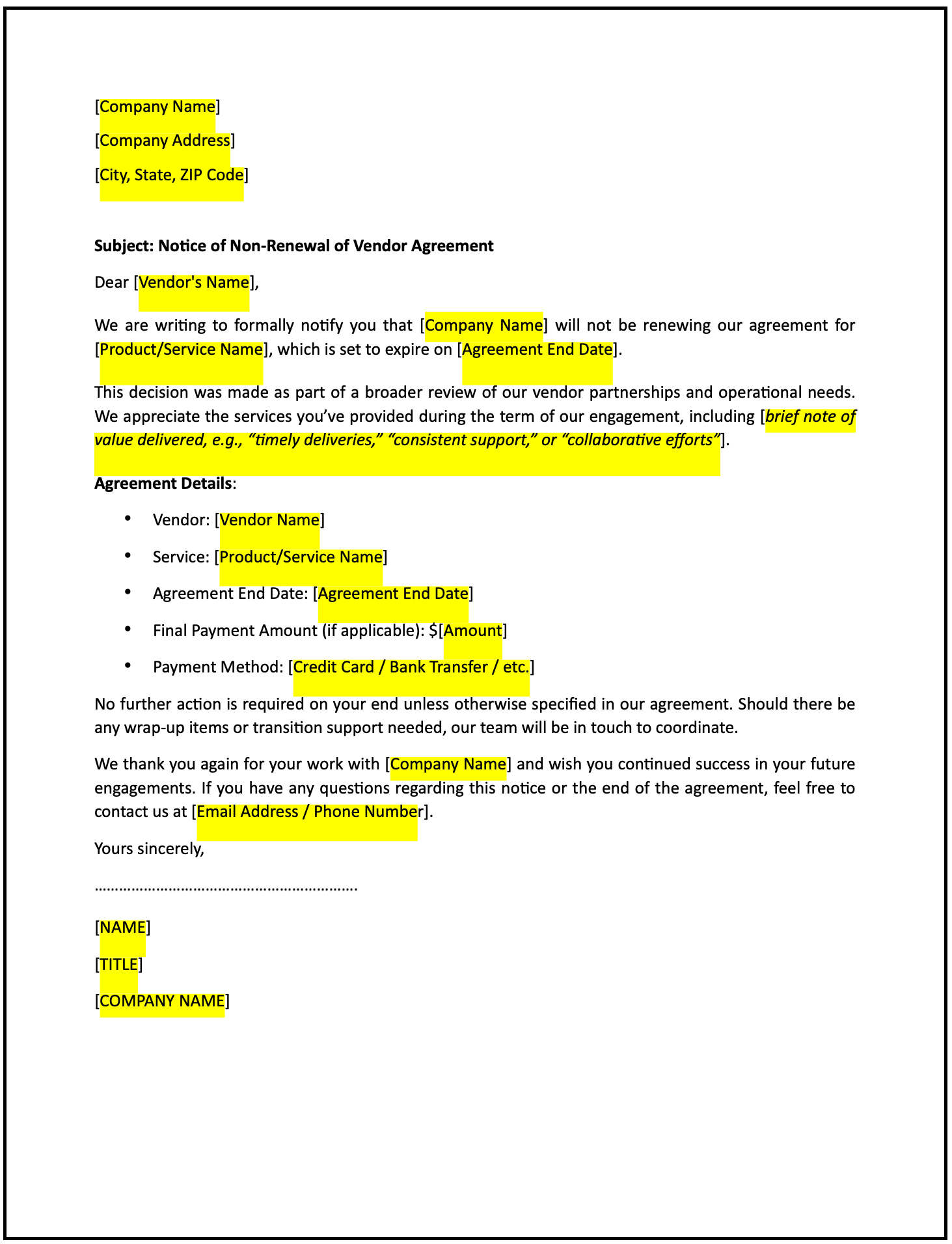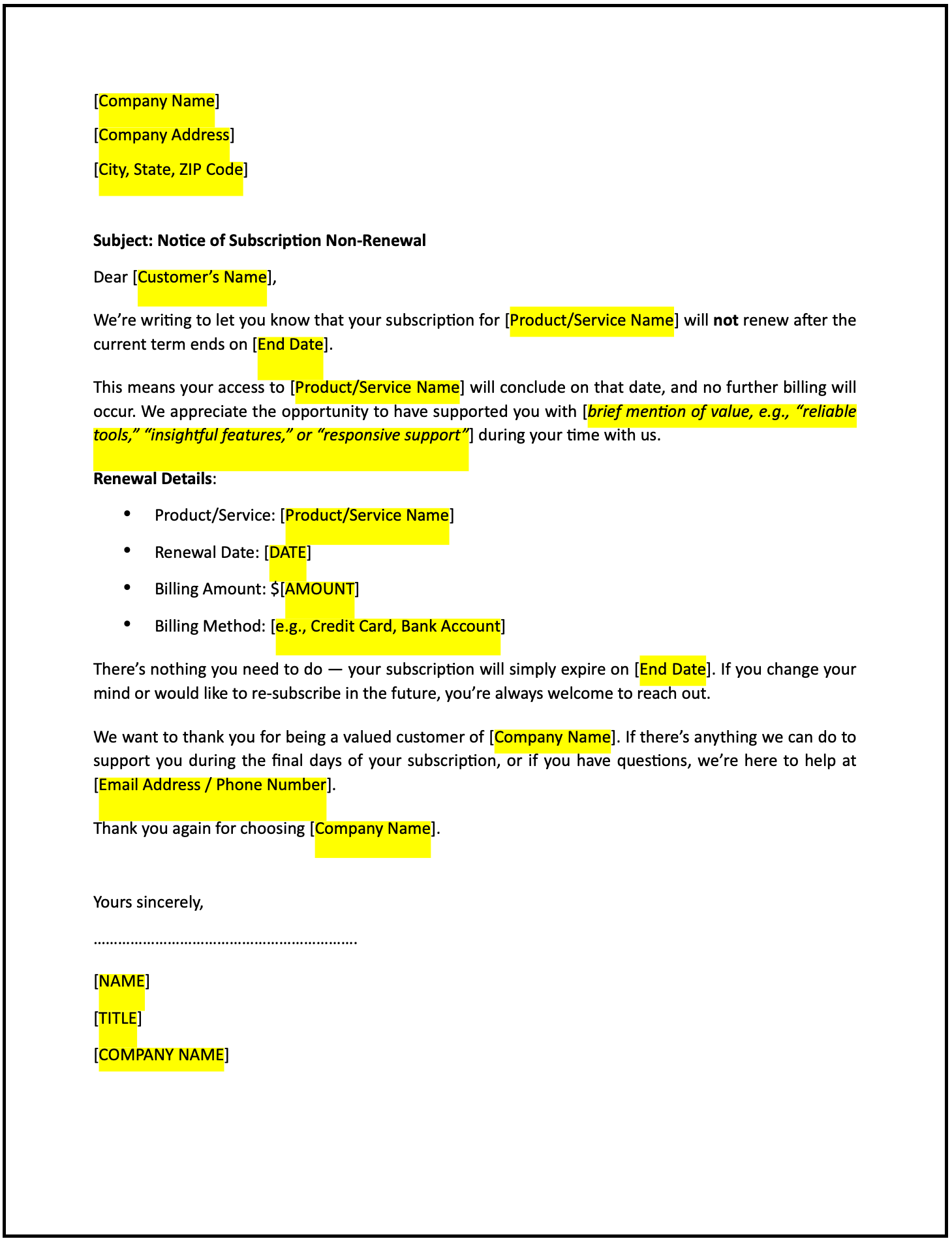Letter of overdue payment: Free template

Letter of overdue payment
A notification letter of overdue payment is a formal communication used to inform a customer about an outstanding payment that is past due. This letter serves as a polite reminder while emphasizing the importance of timely resolution to maintain the business relationship.
How to use this letter of overdue payment
- Open with acknowledgment: Start by addressing the customer respectfully and referencing their account or transaction.
- State the overdue payment: Clearly specify the amount overdue, the original due date, and any relevant invoice or reference number.
- Highlight the importance: Politely emphasize the significance of settling the overdue payment to maintain uninterrupted services or account standing.
- Offer a grace period or next steps: If applicable, mention any grace period or revised deadline to settle the overdue amount.
- Include payment options: Provide clear instructions on how the customer can make the payment, such as online platforms, bank transfers, or in-person options.
- Reassure the customer: Express your willingness to assist if they are experiencing difficulties in making the payment.
- Maintain a professional tone: Ensure the letter is clear, polite, and focused on resolution without being overly assertive.
- Provide contact information: Include details for the customer to reach out with questions or to discuss the overdue payment.
Benefits of using a letter of overdue payment
This letter ensures clear and professional communication about overdue payments while maintaining a positive relationship. Here’s how it helps:
- Promotes resolution: Encourages customers to address overdue payments promptly.
- Reflects professionalism: A well-crafted letter demonstrates respect and attentiveness to financial agreements.
- Fosters goodwill: Politely addressing the issue maintains customer trust and long-term relationships.
- Supports financial tracking: Formal documentation ensures clarity and aids in record-keeping.
- Reduces conflicts: Transparent communication minimizes misunderstandings and potential disputes.
Tips for writing an effective letter of overdue payment
- Be specific: Clearly describe the overdue amount, original due date, and invoice or reference number.
- Use professional language: Maintain a respectful tone to encourage prompt resolution.
- Offer actionable advice: Provide clear payment instructions and options for settling the overdue amount.
- Highlight next steps: Mention any potential consequences of continued non-payment, such as service disruptions or late fees, while remaining professional.
- Keep it concise: Focus on the key points while ensuring the tone is clear and supportive.
Frequently asked questions (FAQs)
Q: What details should I include in this letter?
A: Include the overdue amount, original due date, invoice or reference number, and payment instructions.
Q: Should I personalize the letter?
A: Yes, addressing the customer directly ensures clarity and demonstrates attentiveness.
Q: Who typically sends this letter?
A: The finance, billing, or accounts receivable team usually sends this letter.
Q: How formal should this letter be?
A: The tone should be professional and courteous, focusing on resolution without being overly aggressive.
Q: When should this letter be sent?
A: Send the letter promptly after the payment due date has passed to encourage timely resolution.
Q: Can this letter include late fees or penalties?
A: Yes, if applicable, mention any late fees or penalties clearly, along with instructions for avoiding them by prompt payment.
Q: Is acknowledgment from the customer required?
A: While not mandatory, encouraging acknowledgment ensures the customer is aware of the overdue payment and can address it promptly.
This article contains general legal information and does not contain legal advice. Cobrief is not a law firm or a substitute for an attorney or law firm. The law is complex and changes often. For legal advice, please ask a lawyer.


